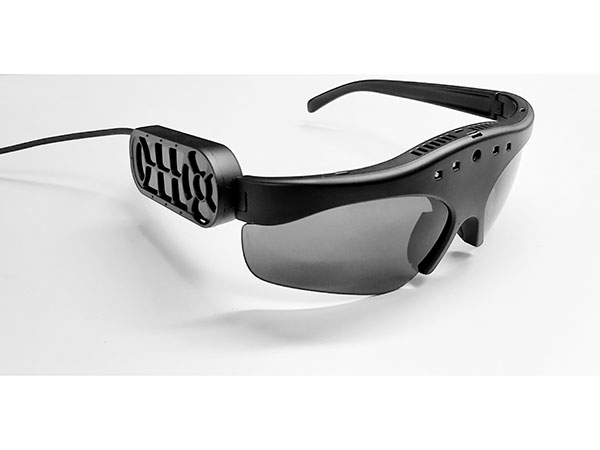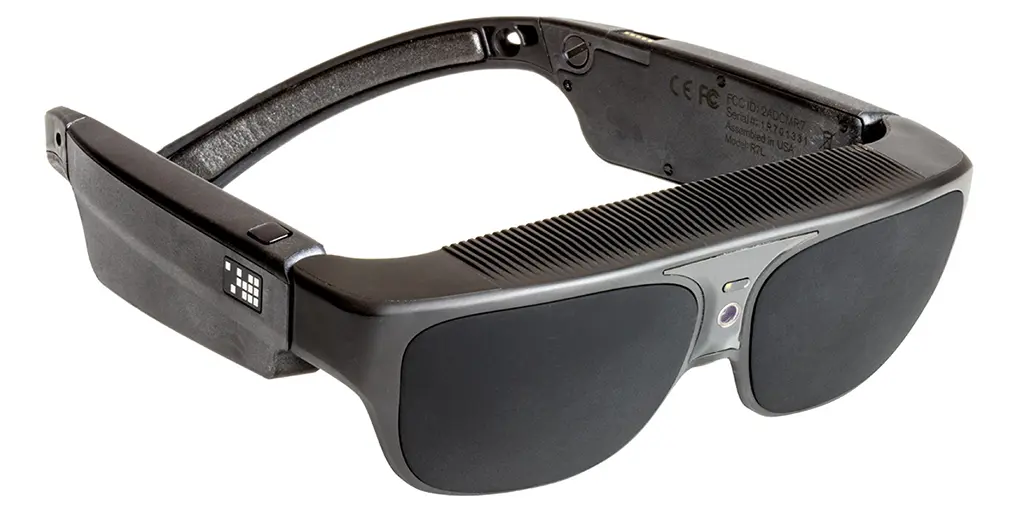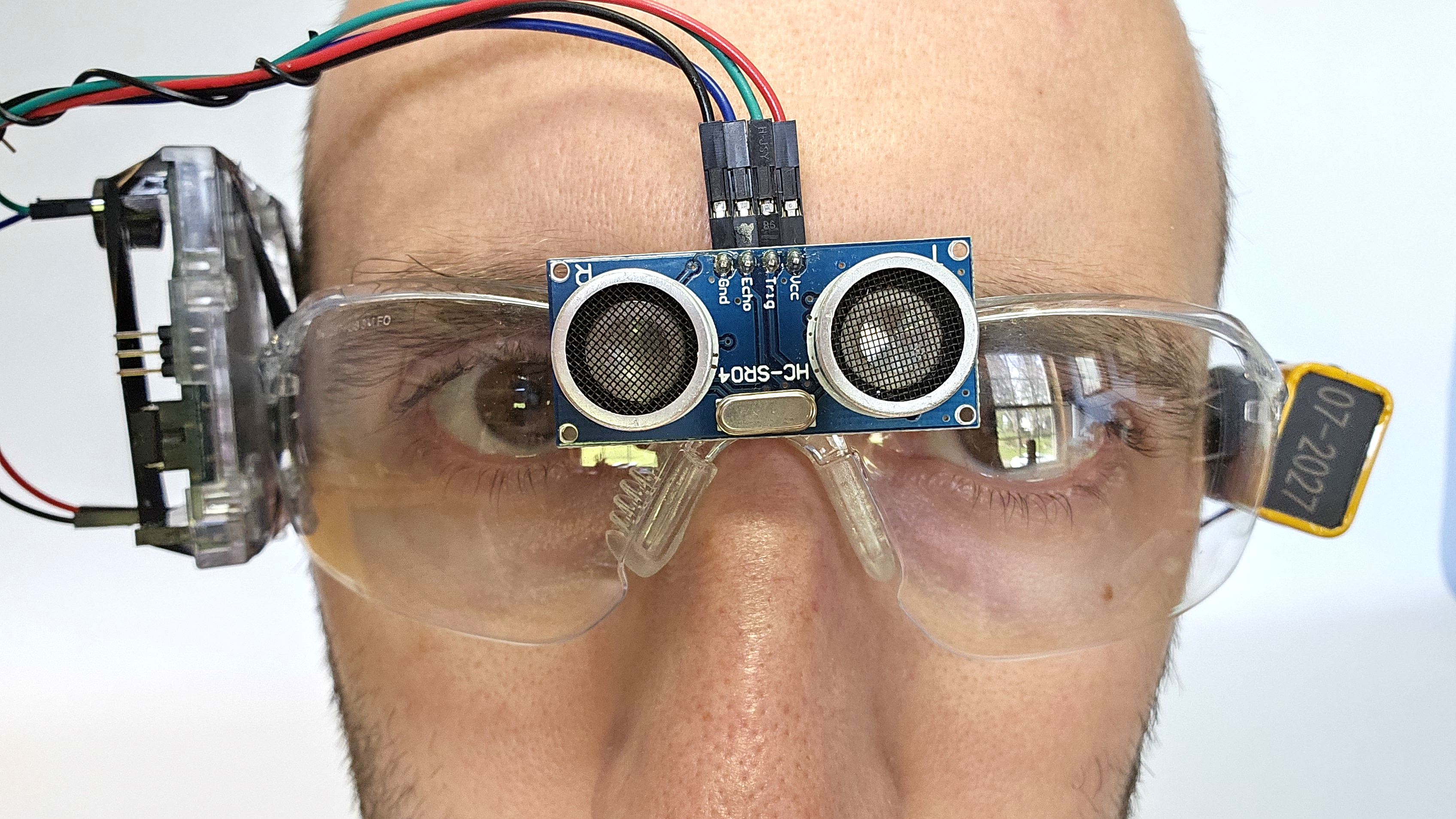Discover Advanced Assistive Instruments for Individuals With Visual Impairments
The landscape of assistive modern technology for individuals with aesthetic disabilities is developing swiftly, providing a variety of cutting-edge devices that boost autonomy and engagement. From clever glasses that flawlessly combine visual input with auditory support to sophisticated navigating applications that redefine spatial awareness, these devices are improving possibilities.
Smart Glasses Innovations
Smart glasses represent a considerable improvement in assistive modern technology for individuals with visual disabilities. These cutting-edge tools incorporate numerous functions designed to enhance the user's communication with their setting. Furnished with electronic cameras and sensing units, smart glasses can capture real-time visual information, which is after that processed and conveyed to the individual via audio comments or haptic sensations. This capability allows individuals to get prompt descriptions of their surroundings, enhancing their ability to browse and engage with the world.
In addition, advancements in artificial knowledge have better improved the capabilities of smart glasses. Artificial intelligence algorithms can acknowledge faces, checked out message, and determine objects, making them very useful devices for daily tasks. Customers can receive acoustic signs that offer context about their setting, promoting independence and confidence.
Additionally, the ergonomic layout and light-weight nature of lots of wise glasses make them appropriate for prolonged use, ensuring convenience while enhancing capability. As these gadgets continue to develop, they hold the possible to reinvent the way people with visual problems experience their lives, linking the space in between availability and innovation. The recurring r & d in this area promise to increase the opportunities for clever glasses, making them an essential component of modern-day assistive devices.
Navigating Application and Tools
Many navigation apps and devices have actually become essential sources for people with visual disabilities, significantly enhancing their ability to traverse unfamiliar settings. These modern technologies leverage general practitioner performance, audio hints, and real-time data to offer individuals with specific navigation support.
One famous instance is the Aira application, which links customers to qualified agents who can give visual descriptions of environments and navigation support with a real-time video clip feed. This service boosts the customer's spatial recognition and confidence while navigating. An additional significant device is Seeing Eye GPS, which provides voice-guided navigating and sights, making it possible for users to access essential details about their surroundings.

As modern technology remains to advancement, the development of much more innovative navigating tools promises to additional equip individuals with visual impairments, assisting in seamless flexibility and combination right into varied settings. Such developments are critical in promoting a more inclusive culture.
Braille Technology Advancements
In current years, advancements in Braille innovation have actually substantially changed exactly how people with visual impairments access details and involve with the globe around them. The growth of mobile Braille displays has actually transformed reading by allowing users to link wirelessly to computer systems, tablet computers, and smartphones. These gadgets transform message into Braille in real-time, enabling smooth communication with digital material.
Furthermore, innovative Braille printers have actually arised, enhancing the manufacturing of responsive materials. Modern embossers are faster and a lot more efficient, permitting for the quick creation of Braille files and educational products. This efficiency lowers the time and price related to generating Braille sources, making them extra easily accessible to schools and organizations.
Additionally, the assimilation of Braille with other technologies, such as expert system and device learning, has actually opened new avenues for individualized discovering experiences. Voice acknowledgment and synthesis innovations can enhance Braille, giving a comprehensive method to details dissemination.
As the demand for inclusive education and workplace settings expands, these technical advancements play a critical role in equipping people with aesthetic impairments, ensuring they have advanced eye care equivalent accessibility to details and opportunities in various elements of life.
Wearable Instruments for Independence
A growing selection of wearable gadgets is improving freedom for people with visual disabilities, providing ingenious remedies that boost navigating and day-to-day living. Braille displays and notetakers. These devices use advanced technologies to give real-time responses and support, advertising freedom in different environments

Wearable innovation likewise includes smartwatches that can be configured with access features, making it possible for individuals to obtain notifications, track their areas, or even call for assistance with the touch of a button. Some devices incorporate synthetic knowledge to assess the environment, offering audio descriptions of neighboring things or people.
Voice-Activated Assistive Solutions
Leveraging voice-activated assistive services has actually transformed the landscape of assistance for people with aesthetic impairments, providing hands-free interaction and access to a variety of jobs. These innovations utilize all-natural language handling and synthetic intelligence to enable individuals to do day-to-day tasks through straightforward voice commands.

In addition, recent innovations in voice recognition precision have improved the user experience dramatically, suiting varied accents and speech patterns. This inclusivity ensures that even more people can take advantage of these innovations, fostering a better feeling of autonomy.
Conclusion
To conclude, the growth of sophisticated assistive tools substantially improves the freedom and lifestyle for individuals with aesthetic impairments. Innovations such as smart glasses, navigation apps, Braille modern technology, wearable tools, and voice-activated options collectively promote a more comprehensive atmosphere. These innovations empower individuals to browse their environments with self-confidence and involve more fully with the globe, eventually promoting better access and level playing fields for individuals encountering aesthetic challenges.
The landscape of assistive modern technology for individuals with aesthetic impairments is evolving rapidly, presenting a variety of ingenious devices that boost freedom and engagement.Smart glasses stand for a considerable advancement in assistive modern technology for people with visual disabilities. As these tools continue to progress, they hold the prospective to reinvent the means people with aesthetic impairments experience their everyday lives, linking the space in between glaucoma ease of access and technology.In current years, innovations in Braille technology have significantly transformed just how people with visual problems access details and engage with the globe around them. These technologies encourage users to browse their environments with self-confidence and involve more fully with the globe, ultimately promoting greater ease of access and equal chances for individuals encountering aesthetic difficulties.